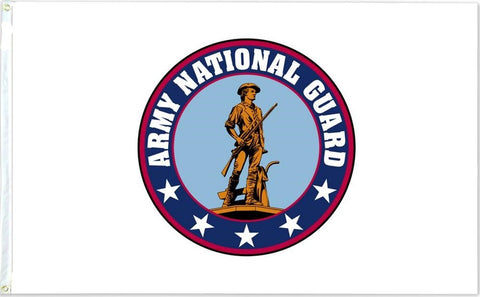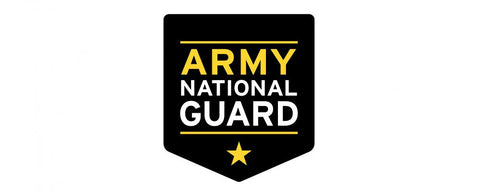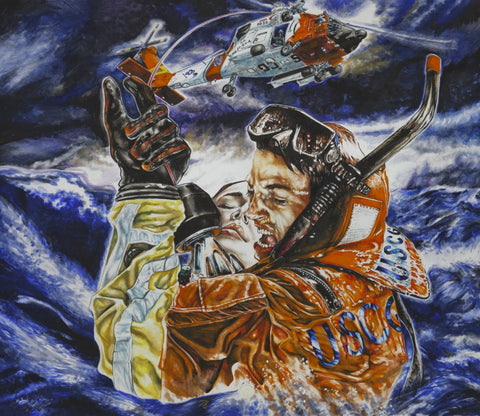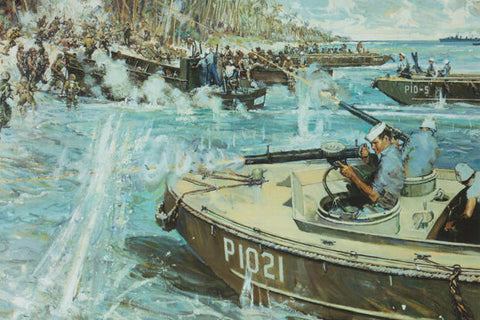Celebrities Who Served in the Military
Whether they are sports legends, movie stars, artists, or musicians, there are numerous celebrities who served in the military and have worn the uniform. Some of these celebrities who served in the military spent a few years in the ranks, others didn’t last that long, and just a few made a career out of it.
I can’t write about all of them, but here is a list of celebrities who served in the military, two celebrities for every branch.
U.S. Army
Pat Tillman was a National Football League (NFL) player who felt compelled to serve after the 9-11 attacks. Once he completed his 2001 season, he left his sports career and a $3 million yearly contract and enlisted in the U.S. Army in 2002, eventually becoming a Ranger. He served in both Iraq and Afghanistan and he was mistakenly killed by U.S. forces in Afghanistan in 2004, according to the Army. His death and the Army’s attempt to cover it up was controversial. According to those who served with him, Tillman was a popular soldier and he exemplified the Ranger Creed. Tillman was the first professional football player to be killed in combat since Bob Kalsu who was killed in the Vietnam War in 1970.

James Earl Jones is known for his voice and his commanding presence on the movie screen, but he is also one of our celebrities who served in the military. Jones attended the University of Michigan where he was a member of the Reserve Officer Training Corps. He was commissioned as a second lieutenant in 1953 and he completed the Infantry Officers Basic Course at Fort Benning, Georgia. He later attended Ranger school. His immediately recognizable voice is due in large part to the fact that he is the voice of Star Wars villain Darth Vader for the first movies in the series. He is also the voice who tells news viewers that they are watching CNN and many adults once knew him when they were children as the voice of Mufasa in Disney’s animated film, The Lion King.
Other famous celebrities who served in the military are Army veterans singer/actor Elvis Presley, rock star Jimi Hendrix, singer/songwriter/actor Kris Kristofferson, television host Pat Sajak, baseball player Jackie Robinson, actor/comedian Mel Brooks, cartoonist Charles M. Schulz, rapper/actor Ice-T, actor Mr. T, and crooner Tony Bennett.
U.S. Marine Corps
Bob Keeshan enlisted in the Marine Corps in 1945 hoping to get into the fight against the Japanese in World War II, but he never made it overseas. He did earn his Eagle, Globe and Anchor. After the Corps, Keeshan went on to create Captain Kangaroo, an immensely successful television show for kids which aired from 1955 to 1984 and rivaled the success of Mr. Rogers’ Neighborhood. Keeshan died in 2004.
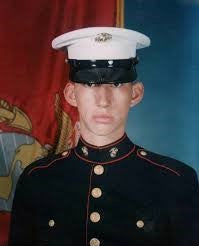
Actor Adam Driver, is the second Marine in our list to be a Star Wars villain. He played Kylo Ren and has seen great success as a movie star after he left the Marine Corps where he was discharged after almost three years of service for an injury that he received mountain biking. Since leaving the Corps, Driver studied acting at the Juilliard School, has been on Broadway and in numerous films and he founded Arts in the Armed Forces, a non-profit that brings arts programming to service members and veterans around the world free of charge.
Other celebrities who served in the military are Marines actor Gene Hackman, actress Bea Arthur, rapper Shaggy, comedian Drew Carey, actor George C. Scott, television host Montel Williams, comedian Rob Riggle (who retired from the USMCR), actor Harvey Keitel, actor Lee Marvin, and actor Steve McQueen.
U.S. Navy
NFL legend quarterback Roger Staubach graduated from the U.S. Naval Academy in 1965. According to the Navy, as a midshipman, Staubach earned college football’s top honor, The Heisman Trophy and after graduating in 1965, Staubach served four years of active duty service in the Navy, including one year of overseas duty in Vietnam. Staubach played in the NFL for 11 years with the Dallas Cowboys and led the Cowboys to two Super Bowl victories. He was elected into the NFL Hall of Fame in 1985.
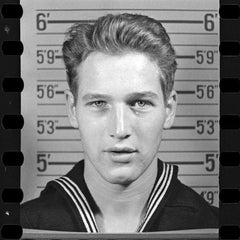
Film legend Paul Newman was known for his many movies like Cool Hand Luke, and his voice work as Doc Hudson in the Disney animated movie, Cars. He was also an avid car racing buff and his philanthropic work with his food line, Newman’s Own is still contributing to many charities. But Newman was also a decorated Navy seaman who served in the Pacific theatre during World War II as a gunner on an Avenger torpedo bomber. He served from 1943-46. He was fortunate once when his plane was grounded due to a pilot’s ear infection. The ship he was supposed to be flying to, the USS Bunker Hill, was sunk by a kamikaze bomber and Newman’s unit suffered major casualties. He died in 2008.
Other celebrities who served in the military are Navy veterans actor Jason Robards, jazz great John Coltrane, rapper MC Hammer, actor Humphrey Bogart, television host Johnny Carson, actor Kirk Douglas, television host Bob Barker, actor Henry Fonda, pro-wrestler Jesse Ventura, and baseball great Yogi Berra.
U.S. Air Force
James Stewart the actor from the holiday film classic, It’s a Wonderful Life, became the first American movie star to enlist in the U.S. Army to fight in World War II in February 1941. He applied for an officer commission and as a college graduate and a licensed pilot he was commissioned into the Air Corps. During World War II he would hold a variety of positions, including service as a unit commander. He flew 20 missions as a bomber pilot and earned the Distinguished Flying Cross, the Air Medal, and the Croix de Guerre. After World War II, Stewart remained in the Air Force Reserve and he ascended to the rank of brigadier general. His last combat mission was in 1966 over Vietnam as a non-duty observer in a B-52. He retired from the Air Force Reserve in 1968 after 27 years of service and after reaching the mandatory retirement age of 60. He died in 1997.
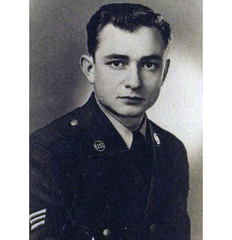
Before he was the man in black, Johnny Cash enlisted in the Air Force in 1950 attending basic training at Lackland Air Force Base in San Antonio, Texas. Cash would become a Morse code operator charged with intercepting Soviet army transmissions. He left the Air Force four years later in July 1954 as a staff sergeant. A year later, Cash recorded his first rockabilly style songs and thus began his epic music journey which made him a music legend. He died in 2003.
Other celebrities who served in the military are Air Force veterans painter/television host Bob Ross, writer Michael Blake (Dances with Wolves), actor/martial arts badass Chuck Norris, actor Morgan Freeman, comedian George Carlin, television host Sunny Anderson, comedian Flip Wilson, Olympian Louis Zamperini, singer Mel Tillis, and gonzo journalist Hunter S. Thompson.
U.S. Coast Guard
Actor Jeff Bridges served as a boatswain’s mate from 1967-1975 and left the Coast Guard Reserve as a petty officer second class. Bridges has made more than 70 movies, including Iron Man and True Grit, but he achieved a cult-like following as the White Russian-drinking, pot smoking, bowler, The Dude, in the 1998 movie, The Big Lebowski. His father and brother, also actors, both served in the Coast Guard Reserve and Coast Guard Auxiliary.
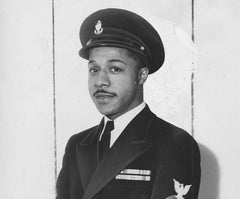
Alex Haley enlisted in the U.S. Coast Guard in 1939 after attending college. Haley enlisted as a mess attendant third class since the mess attendant and steward’s mate ratings were the only ratings in the Coast Guard open to minorities at that time, according to the Coast Guard. He saw service in the Pacific Theater in 1944 and he made money with a side hustle penning love letters for his shipmates. He also freelanced and submitted articles about war duty and sea service for Coast Guard publications. At one point, Haley became the only chief journalist in the Coast Guard, serving as the assistant public affairs officer at the Coast Guard’s New York City headquarters. In 1959, he retired from the Coast Guard after 20 years of service to pursue his dream of becoming a full-time writer. Seventeen years after his retirement, he published the international best-seller, Roots: The Saga of an American Family in 1976. The book was later made into a television mini-series. Haley died in 1992.
Other celebrities who served in the military are Coasties actor Lloyd Bridges, hockey legend John Mariucci, boxing great Jack Dempsey, actor Chris Cooper, actor Beau Bridges, golf great Arnold Palmer, film maker Blake Edwards, actor Buddy Ebsen, actor Cesar Romero, and news broadcaster Charles Gibson.
U.S. Space Force
Steve Carell served as a general in the U.S. Space Force. Okay, just kidding, that’s a television show, but maybe right now in the Space Force ranks there is someone who might become a famous celebrity after wearing the Space Force uniform.
For now, the newest branch of the U.S. military is too new to have anyone to have served and gone on to earn fame.



